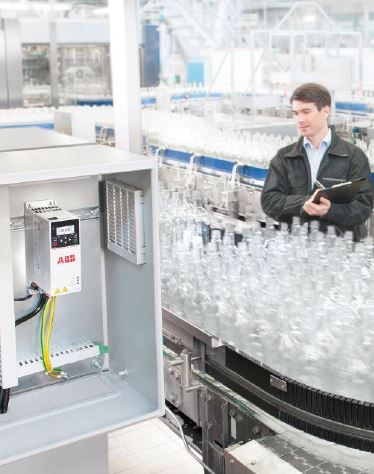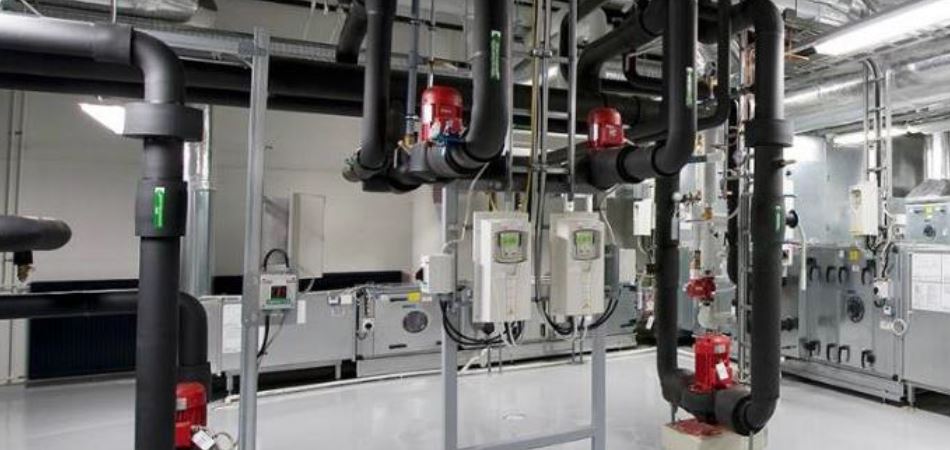Is It Time To Replace Your VSD?
Variable speed drives (VSDs) are renowned for being reliable and robust devices. If properly and regularly maintained there is no reason why a VSD will not function for 20-plus years. Yet the replacement VSD market is growing at some 40 percent per annum. Andy Preston, UK Drives Product Manager, ABB Limited, suggests a reason why.
The motivation for replacing a VSD is not always down to old age and a drop in reliability. There is a growing realisation that VSDs are a very different proposition to those installed even five years ago.
Today’s VSDs pack more digital tech, are smaller, and carry more functionality than ever before. So, what does that mean for today’s plant engineers?
The world of digital
While VSDs have always been billed as digital devices, they are now packed with even more sensors, eagerly waiting to communicate with the plethora of other devices that define the factory of the future. An example of this is the way in which the Internet of Things is delivering innovative remote services for VSD maintenance planning, thereby delivering a range of competitive advantages for customers such as improving data analysis, boosting productivity and enhancing reliability.
In many industrial applications, such as pumps or fans which are powered by a drive and motor combination, it is the VSD that controls the operation. Even in larger systems, where an automation system or PLC controls the VSD, it is the latter that can provide important indicators about the operation of the motor and the application.
ABB’s remote services programme uses this information from VSDs to provide the earliest possible indication of potential operational problems faster, helping operators to minimise costly breakdowns.
Remote Support is a reactive service. ABB only gets involved when an operator has some concerns and actively requests assistance. This could be when a drive is sending a fault message. ABB collects data continuously from the VSDs covered by the service, and as soon as a fault situation is detected, the monitoring system starts sending greater amounts of data to facilitate more thorough analysis and faster problem resolution.
Another more comprehensive and proactive service is Remote Condition Monitoring. ABB actively monitors the drives covered and uses deep experience of what is the ‘normal’ state of operation. ABB experts can make a good estimation of the condition of the device and offer accurate maintenance recommendations. Also, as part of the service the experts are always looking out for early indications of possible faults.
It’s what’s inside that counts
Another reason for replacing an existing VSD is to take advantage of the increased functionality in today’s models. Many people still think the sole function of a VSD is to start/stop a motor and make it go faster/slower. Not enough know about the hidden potential within modern VSDs, and as such never, metaphorically, switch it on.
Typically, a cabinet drawing from a panel builder will show thermostats used for controlling cabinet fans to save standby losses, timer relays, contactors and door-mounted HMIs. It may show a moving iron meter indicating amps or volts instead of true process values. And it might include a mini PLC for decision making or for controlling the system to behave at different times of the day, or to monitor variables in the field, against which decisions are made.
Yet all these components, and more are not needed as they are already built within the VSD. You don’t need the thermostat (saving around £200) as the drive will tell you when its own fans are running, thereby switching on cabinet cooling fans automatically. Timer relays (saving around £180) are not required as the drive has a real-time clock, from which timers can be set to either start or stop an application running, depending on operating conditions.
One of the costlier components is the contactor which is now no longer needed as the drive has built-in safe torque off (STO); a SIL 3 PL e stop function that is safer than contactors. The VSD removes the need for external HMI displays to be cut into the door of cabinets. The keypad negates the need for cabinet furniture such as start/stop buttons, as these can be programmed into the keypad. Costs are saved as the sheet metal worker no longer needs to cut holes for an external HMI.
There are also energy management tools, thereby removing the need for an external energy meter (saving: around £200). The VSD, also, can be set up to determine specific maintenance intervals of the controlled machine, like the tyre pressure warning on a car.
Is It Time To Replace Your VSD?
Why install a host of additional components in the panel when they are already contained in the drive? Why struggle to manage the cabinet cost, when understanding what’s inside the drive, could save up to 50 percent of the cost of cabinet components?
ABB (ABBN: SIX Swiss Ex) is a pioneering technology leader in electrification products, robotics and motion, industrial automation and power grids, serving customers in utilities, industry and transport & infrastructure globally. Continuing a history of innovation spanning more than 130 years, ABB today is writing the future of industrial digitalization with two clear value propositions: bringing electricity from any power plant to any plug and automating industries from natural resources to finished products. As title partner of Formula E, the fully electric international FIA motorsport class, ABB is pushing the boundaries of e-mobility to contribute to a sustainable future. ABB operates in more than 100 countries with about 135,000 employees. www.abb.com



